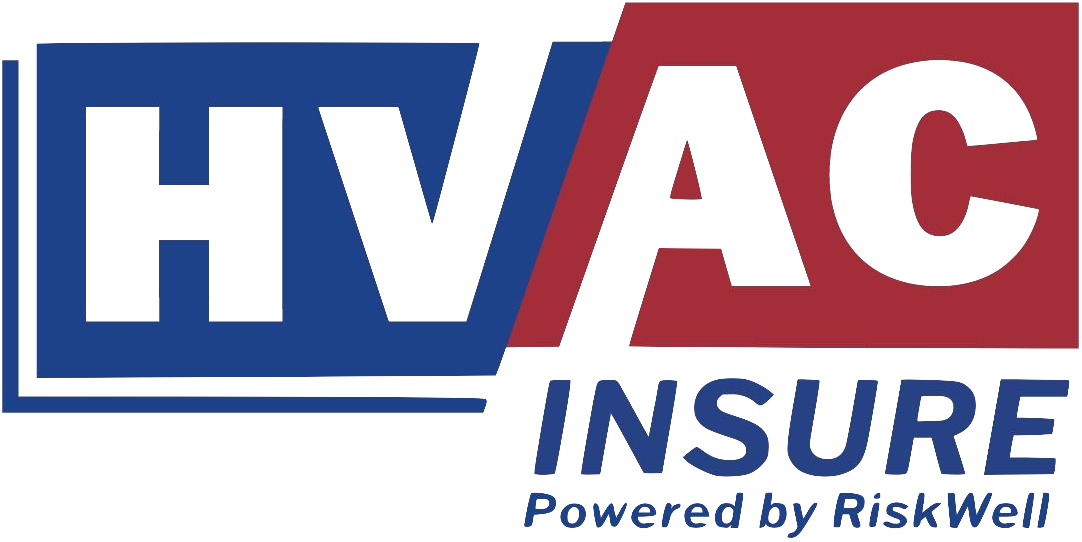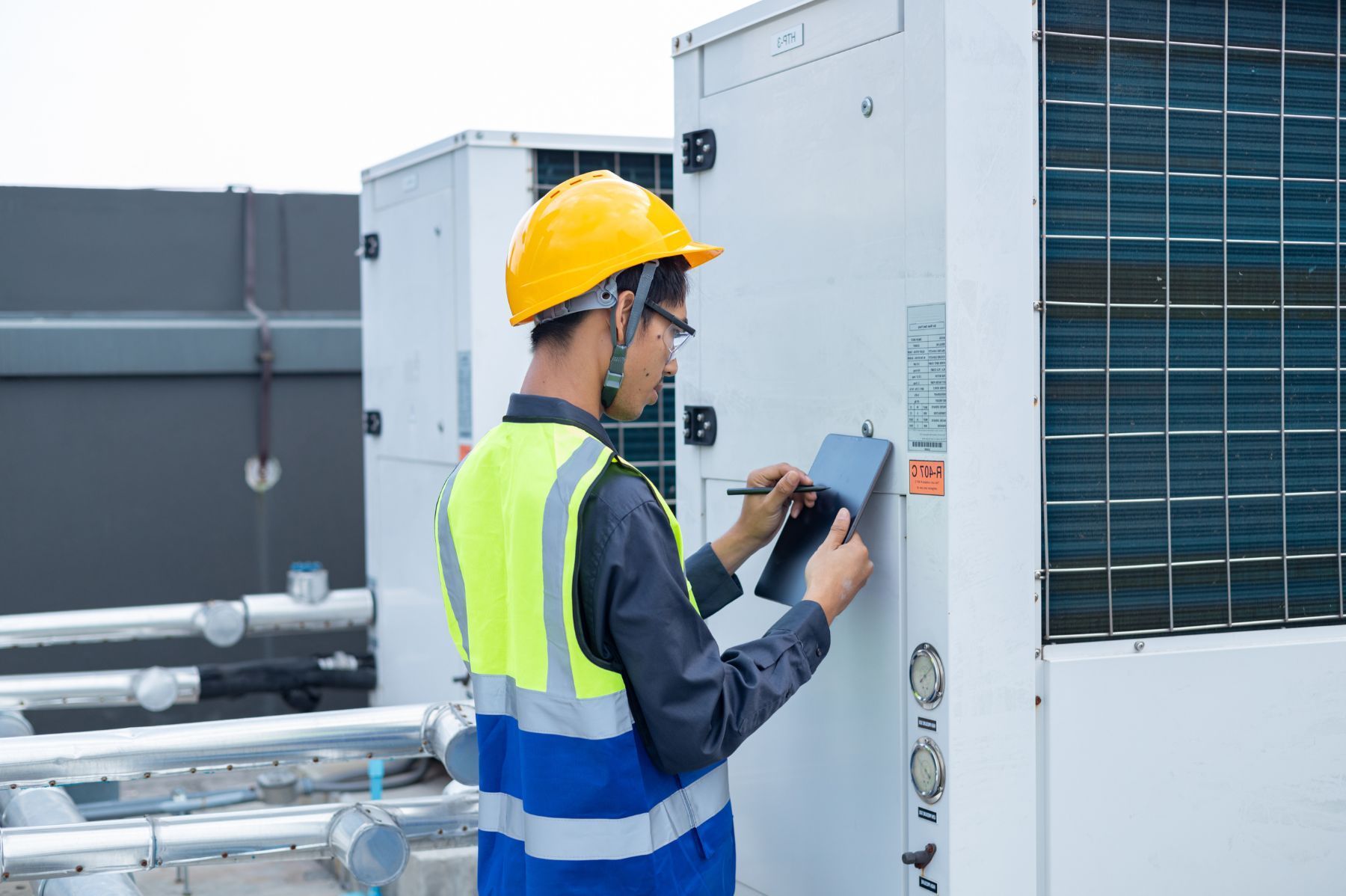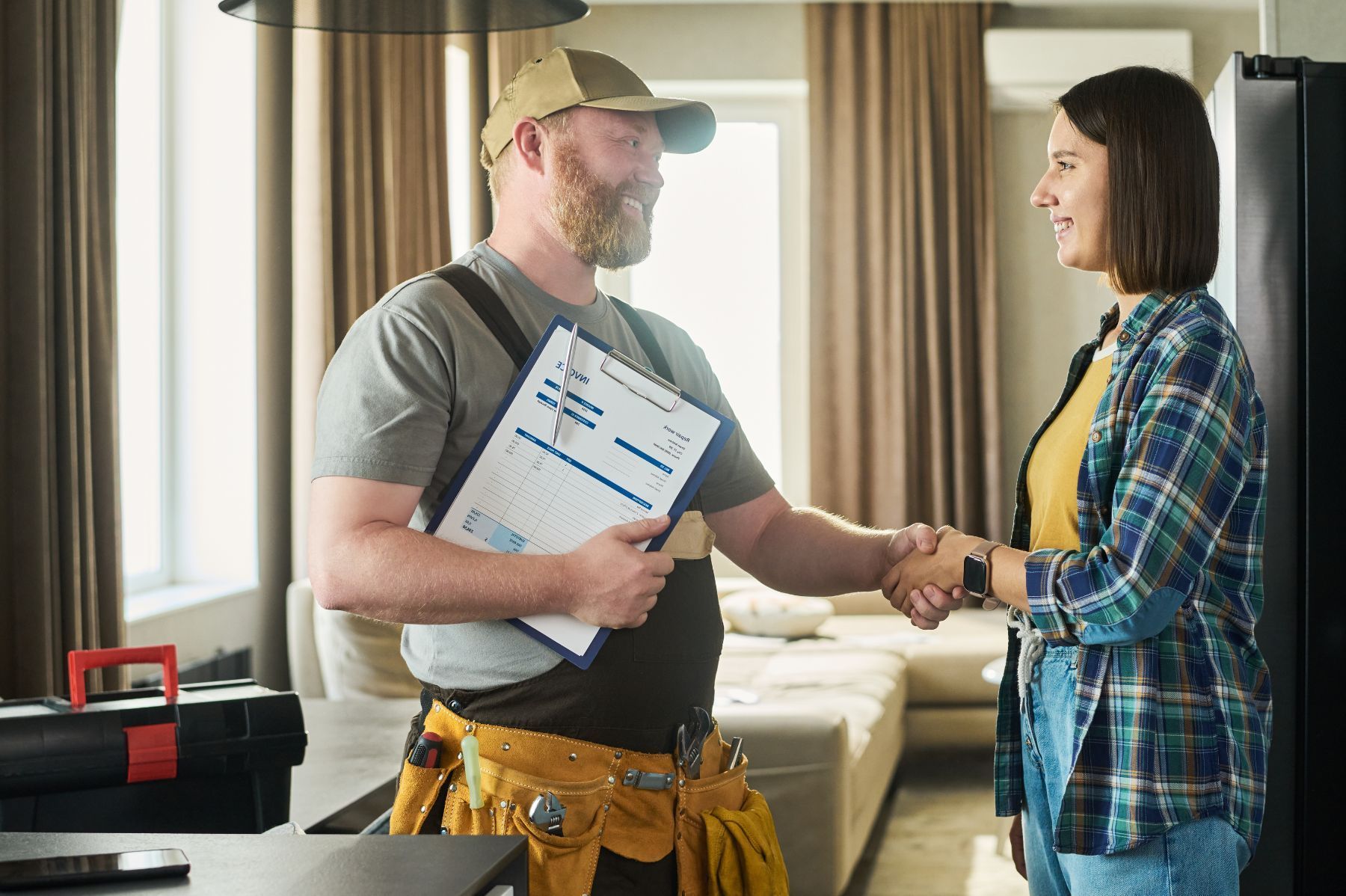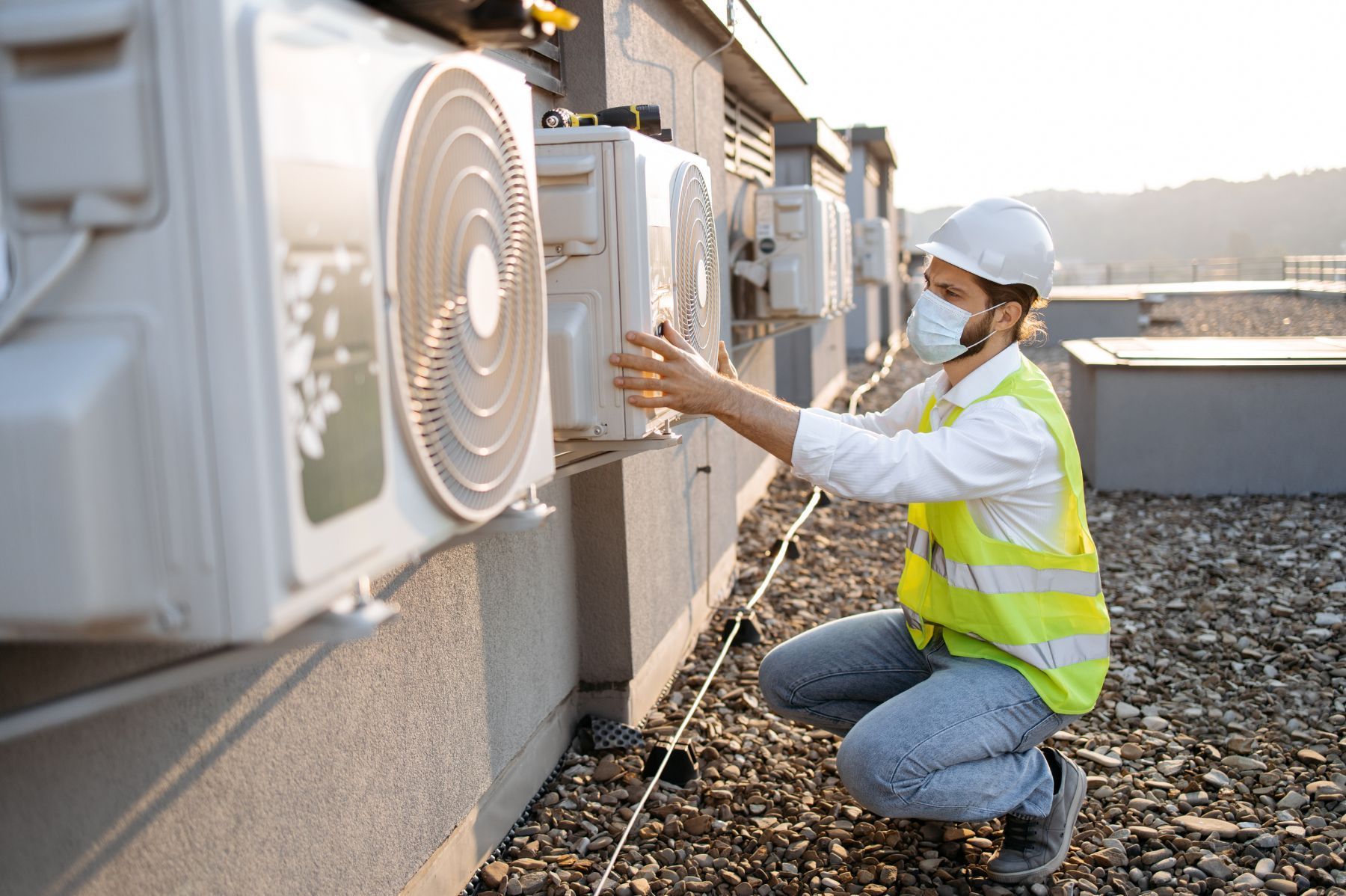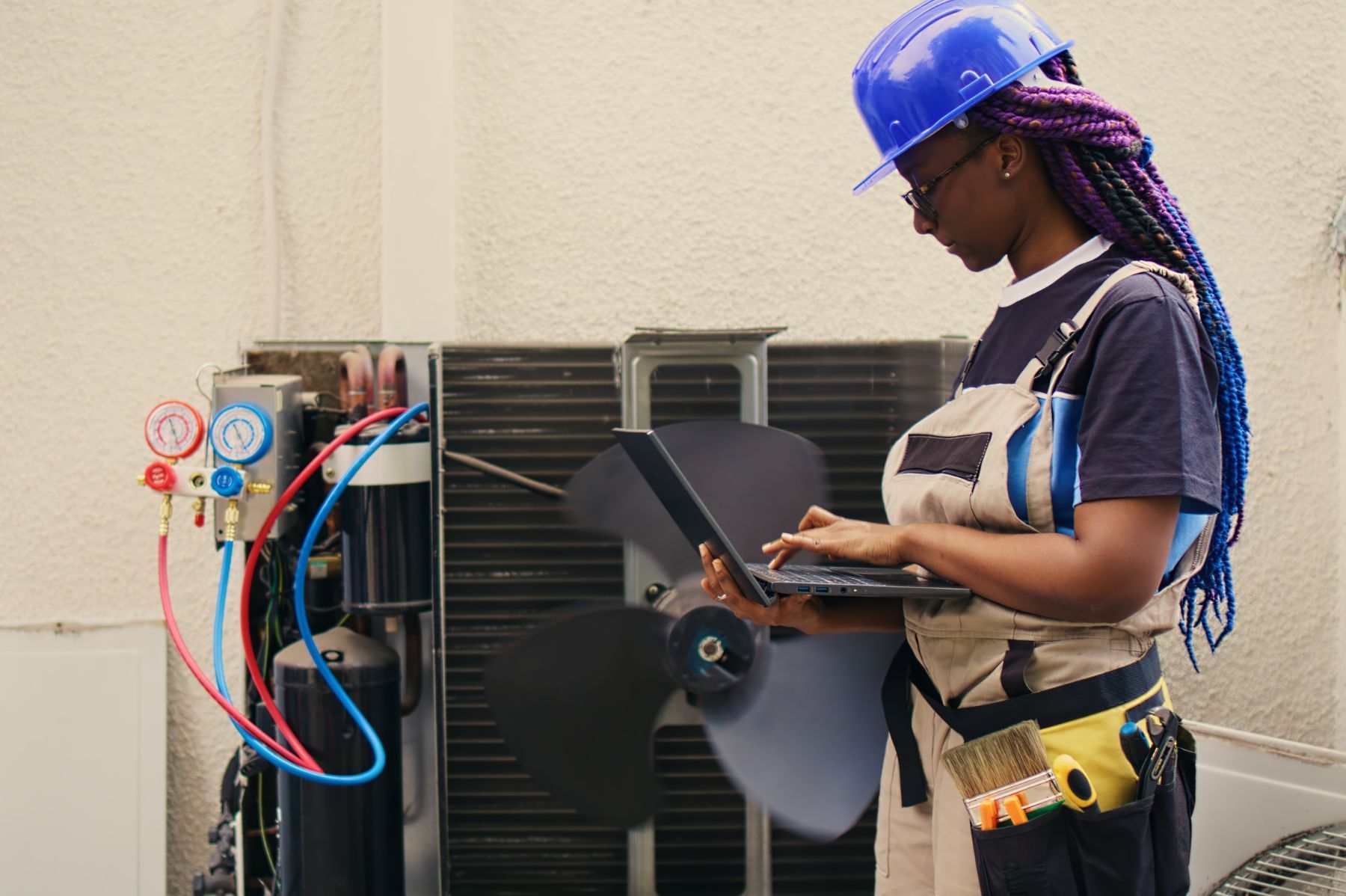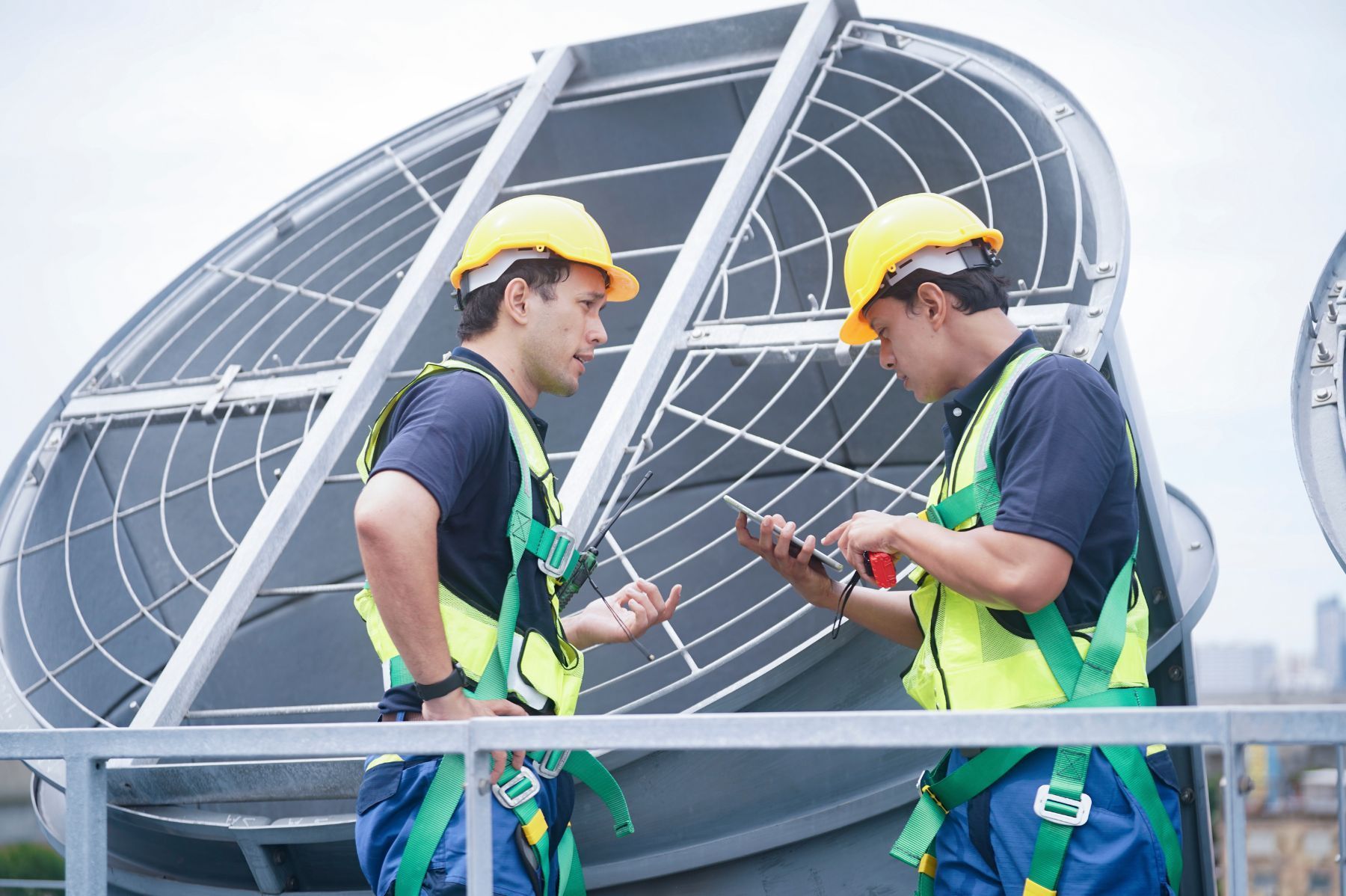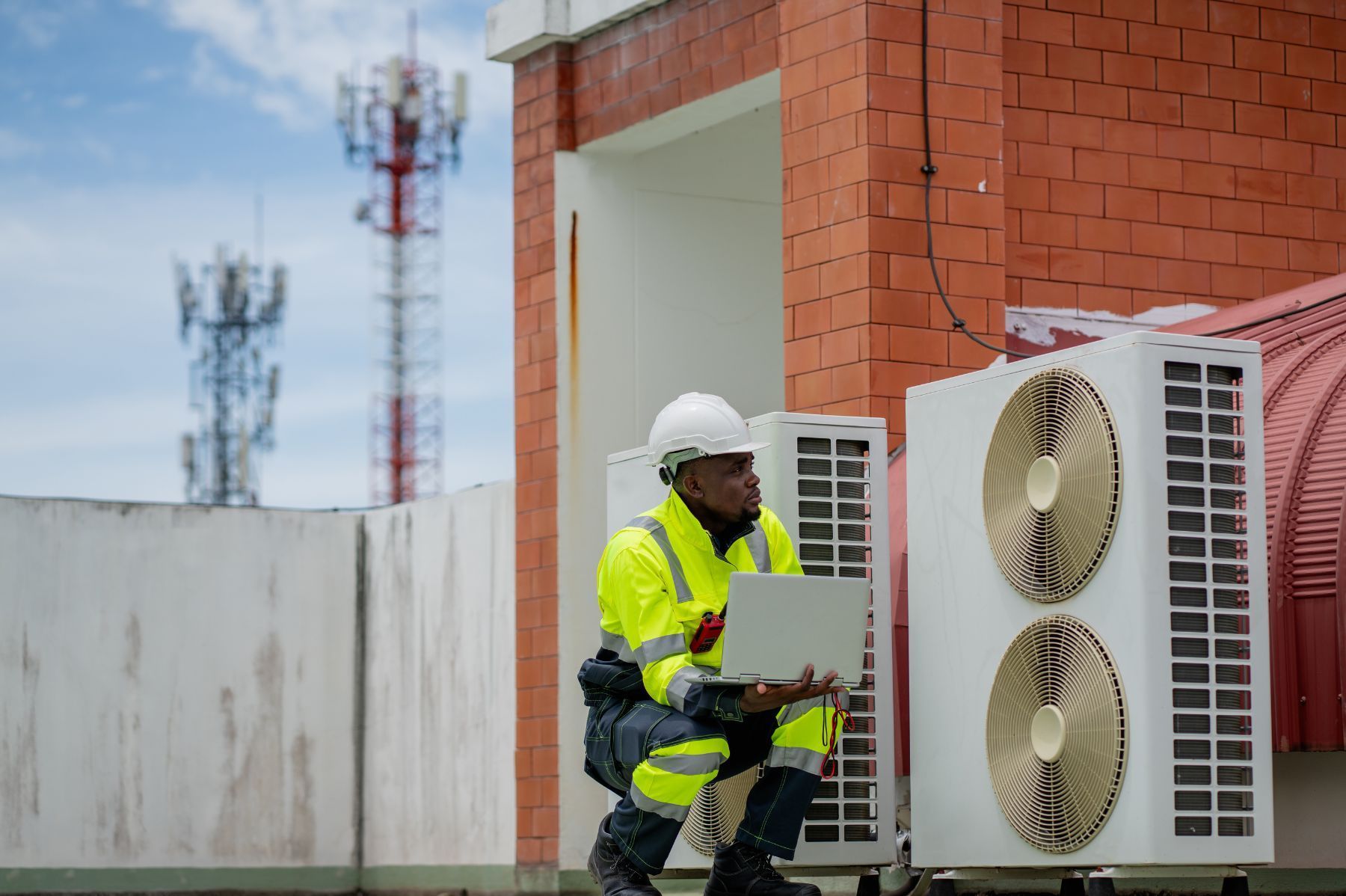How Smart Technologies Are Changing HVAC Liability
See How We're Different
or call us: (469) 678-8001

Imagine a commercial building where the heating and cooling systems adjust themselves in real time, optimizing energy use while maintaining perfect comfort. This is no longer science fiction. Smart HVAC technologies are reshaping how contractors work, how buildings operate, and importantly, how liability risks are managed in the industry. With 65% of HVAC companies exploring or adopting AI solutions to boost efficiency, the landscape of HVAC liability is evolving rapidly (AI in the HVAC Industry Statistics: Reports 2025).
The Rise of Smart HVAC Systems and Its Impact on Liability
Smart HVAC systems integrate sensors, AI, and automation to monitor and adjust equipment performance continuously. This shift is changing the traditional contractor role from reactive maintenance to proactive system management. Contractors now design and install systems that can predict failures before they happen, reducing emergency repairs and costly downtime. By utilizing real-time data analytics, these systems can optimize energy consumption, leading to significant cost savings for both contractors and their clients. The ability to remotely monitor and control HVAC systems also enhances user comfort, as adjustments can be made instantaneously based on occupancy patterns or environmental changes.
However, this transformation brings new liability considerations. When systems rely heavily on software and remote controls, the risk of cyberattacks or software malfunctions increases. About 75% of HVAC industry articles suggest solutions like end-to-end encryption and blockchain data security to mitigate these risks (American Journal of Scholarly Research and Innovation). Contractors must now be vigilant about both physical and digital vulnerabilities. Moreover, the interconnected nature of smart HVAC systems means that a breach in one area could potentially compromise the entire network, making it imperative for contractors to stay updated on cybersecurity trends and best practices.
Insurance providers are responding to these changes by incorporating data-driven underwriting processes, with 99% of insurers investing in generative AI to improve precision (The 2025 HVAC Insurance Market Outlook). This means liability coverage is becoming more tailored, reflecting the complexity of smart systems and their unique risks. As insurers adapt, they are also beginning to offer specialized policies that address the specific challenges posed by smart technology, such as coverage for data breaches or system failures. This evolution in insurance not only provides peace of mind for contractors but also encourages them to adopt more advanced technologies, knowing that they have the appropriate safeguards in place.
Furthermore, the implementation of smart HVAC systems has implications for regulatory compliance as well. As these systems become more prevalent, regulatory bodies are likely to establish new standards to ensure safety and reliability. Contractors will need to stay informed about these regulations, as non-compliance could result in significant liabilities. Additionally, training and certification programs may emerge, focusing on the skills necessary to install and maintain these advanced systems correctly. This shift not only elevates the importance of ongoing education in the HVAC industry but also highlights the need for contractors to build strong relationships with technology providers, ensuring they have access to the latest tools and knowledge to navigate this rapidly changing landscape.
Energy Efficiency and Environmental Liability
Smart HVAC technologies are not just about convenience—they play a crucial role in sustainability. The global market for sustainable HVAC solutions is projected to hit $254 billion by 2027, driven largely by demand for energy-efficient systems (Sustainability In The HVAC Industry Statistics: Reports 2025). As buildings adopt these technologies, liability risks linked to environmental compliance and energy performance come into sharper focus.
Full deployment of energy-efficient HVAC and smart building tech could cut U.S. building emissions by up to 40% by 2030 (Smart HVAC Systems: How Energy-Efficient HVAC Transforms U.S. Buildings). This creates pressure on contractors to ensure systems meet strict efficiency standards. Failure to comply or improper installation can lead to regulatory fines, reputational damage, and costly liability claims.
Contractors also face challenges in guaranteeing that smart systems perform as promised over time. Warranty claims and disputes may increase if clients believe energy savings are not realized, or if smart controls malfunction. This shifts liability toward ongoing system monitoring and maintenance, not just initial installation.
Moreover, the integration of advanced data analytics into HVAC systems allows for real-time monitoring and predictive maintenance, which can significantly enhance energy efficiency. By utilizing sensors and IoT technology, building managers can track energy consumption patterns and identify inefficiencies before they escalate into more significant issues. This proactive approach not only helps in maintaining compliance with environmental regulations but also fosters a culture of sustainability within organizations. As a result, companies that invest in these technologies are likely to see a positive return on investment through reduced energy costs and improved operational efficiency.
Additionally, the increasing emphasis on green building certifications, such as LEED and BREEAM, further amplifies the importance of energy-efficient HVAC systems. These certifications not only serve as a benchmark for sustainability but also enhance a building's marketability and value. As more tenants and buyers prioritize eco-friendly spaces, the demand for certified green buildings is expected to rise. Consequently, contractors must stay abreast of evolving standards and ensure that their installations not only meet but exceed these requirements to remain competitive in a rapidly changing market.
Cybersecurity and Data Privacy Concerns
Smart HVAC systems collect vast amounts of data—from temperature settings to occupancy patterns. This data is valuable for optimizing performance but also creates a target for cyber threats. Unauthorized access could disrupt building operations or expose sensitive information. The implications of such breaches can be significant, ranging from financial losses to reputational damage for businesses. As these systems become more integrated with other smart technologies, the risk of a cascading failure increases, making it crucial for organizations to understand the potential vulnerabilities of their HVAC systems.
Industry experts emphasize the importance of robust cybersecurity measures. Encryption and blockchain-based security protocols are among the top recommendations to protect HVAC control systems from breaches (American Journal of Scholarly Research and Innovation). Liability for data breaches may extend beyond contractors to manufacturers and building owners, complicating risk management. Furthermore, as smart HVAC systems evolve, so do the tactics employed by cybercriminals. They may exploit outdated software or unpatched vulnerabilities, highlighting the necessity for regular updates and maintenance to safeguard against emerging threats.
Insurance policies are adapting to cover cyber risks associated with smart systems. Contractors should verify that their liability coverage includes cyber liability or consider standalone cyber insurance. This is increasingly critical as insurers use AI to refine underwriting, making coverage more precise but also more demanding (The 2025 HVAC Insurance Market Outlook). Additionally, as the regulatory landscape evolves, businesses may face new compliance requirements related to data protection, further complicating their insurance needs. Organizations must stay informed about these changes and proactively engage with their insurance providers to ensure they are adequately covered against potential liabilities arising from data breaches and cyber incidents.
Moreover, the integration of IoT devices in smart HVAC systems adds another layer of complexity. Each connected device can serve as a potential entry point for cyber attackers, making it essential for companies to implement comprehensive network security measures. Regular security audits and employee training on recognizing phishing attempts and other cyber threats can bolster defenses. By fostering a culture of cybersecurity awareness, organizations can better prepare their teams to respond effectively to potential incidents, thereby minimizing the risk of costly breaches and ensuring the integrity of their HVAC systems.
Indoor Air Quality and Health Liability
Indoor air quality (IAQ) has become a priority for building owners and occupants. Smart HVAC systems can monitor and improve IAQ by adjusting ventilation and filtration automatically. The U.S. indoor air quality market was valued at $9.8 billion in 2022 and is expected to grow to $11.9 billion by 2027 (Optimizing Residential HVAC).
This growth reflects rising awareness of health risks linked to poor air quality. For HVAC contractors, this means increased responsibility to ensure systems meet IAQ standards. Failure to deliver adequate air quality can lead to liability claims related to occupant health issues, especially in sensitive environments like schools and hospitals.
Smart technologies help reduce this risk by providing continuous IAQ data and enabling quick responses to problems. However, contractors must be trained to interpret this data correctly and maintain systems to prevent failures that could harm occupants.
Moreover, the implications of poor indoor air quality extend beyond immediate health concerns. Long-term exposure to pollutants can exacerbate chronic conditions such as asthma and cardiovascular diseases, leading to increased healthcare costs and lost productivity. As a result, building owners are not only motivated by regulatory compliance but also by the potential for enhanced occupant satisfaction and retention. Facilities that prioritize IAQ often see a marked improvement in employee morale and performance, creating a win-win situation for both occupants and employers.
In addition to health benefits, investing in advanced HVAC systems can also contribute to energy efficiency. Modern systems equipped with smart technology can optimize energy consumption by adjusting heating and cooling based on real-time occupancy and air quality data. This not only reduces operational costs but also supports sustainability initiatives, appealing to environmentally conscious consumers. As such, the integration of smart HVAC solutions is becoming increasingly essential, not just for compliance and health, but also for fostering a responsible and forward-thinking business model in today's competitive landscape.
Insurance and Liability Coverage Adjustments
The shift toward smart HVAC systems requires contractors to rethink their insurance needs. Traditional policies may not cover the unique risks posed by AI-driven controls, cybersecurity threats, or environmental compliance failures.
Contractors should work closely with insurance professionals who understand these emerging risks. Coverage options now often include cyber liability, errors and omissions for software-related issues, and pollution liability for environmental impacts. Understanding these nuances is essential to avoid gaps in protection.
Data-driven underwriting by insurers, powered by AI, means contractors with smart systems that demonstrate strong risk management may benefit from better rates or coverage terms. Conversely, those ignoring cybersecurity or compliance may face higher premiums or exclusions (The 2025 HVAC Insurance Market Outlook).
Furthermore, as HVAC technology evolves, the integration of IoT devices introduces additional layers of complexity. These devices not only enhance system efficiency but also generate vast amounts of data that can be vulnerable to breaches. Contractors must ensure that their policies cover potential liabilities arising from data breaches, including the costs associated with notifying affected customers and managing public relations crises. Additionally, as regulatory frameworks around data protection tighten, staying compliant is not just a best practice but a necessity that can significantly impact insurance coverage.
Moreover, the environmental implications of HVAC systems cannot be overlooked. As sustainability becomes a focal point in building management, contractors are increasingly held accountable for the environmental footprint of their installations. This includes adhering to regulations regarding refrigerants and emissions. Insurers are beginning to recognize the importance of green certifications and may offer incentives or discounts for contractors who implement eco-friendly practices. Therefore, investing in sustainable technologies not only enhances a contractor's marketability but also plays a crucial role in shaping their insurance landscape.
Preparing for the Future of HVAC Liability
Smart HVAC technologies promise improved efficiency, comfort, and sustainability. But they also bring complex liability challenges that require proactive management. Contractors must stay informed about evolving technology, cybersecurity best practices, and regulatory requirements.
Investing in training and partnering with knowledgeable insurers can help contractors navigate this new landscape. Embracing smart technologies with an eye toward risk mitigation will position businesses for success while protecting them from costly liability claims.
As the smart HVAC market is expected to more than double in size by 2026, reaching $17.1 billion (The 2025 HVAC Insurance Market Outlook), the stakes for managing liability effectively have never been higher.
Moreover, the integration of IoT (Internet of Things) devices into HVAC systems introduces additional layers of complexity. These devices not only enhance system performance but also generate vast amounts of data that can be leveraged for predictive maintenance and energy efficiency. However, this data can also be a target for cyberattacks, making it imperative for contractors to implement robust cybersecurity measures. Regular audits and updates to security protocols are essential to safeguard sensitive information and maintain customer trust.
Furthermore, as regulatory frameworks continue to evolve, contractors must be vigilant about compliance with local, state, and federal laws regarding energy efficiency and emissions. Staying ahead of these regulations not only helps mitigate liability risks but can also provide a competitive edge in a rapidly changing market. By actively participating in industry associations and forums, contractors can gain insights into upcoming regulations and best practices, ensuring they remain compliant while delivering cutting-edge solutions to their clients.
Frequently Asked Questions
Q: How do smart HVAC systems change contractor liability?
A: They introduce new risks related to software failures, cybersecurity, and ongoing system performance, expanding liability beyond traditional equipment issues.
Q: What cybersecurity measures are important for smart HVAC systems?
A: End-to-end encryption and blockchain-based security are key strategies to protect data and control systems from unauthorized access.
Q: Can smart HVAC systems help reduce environmental liability?
A: Yes. Energy-efficient and smart controls can lower emissions and help meet regulatory standards, reducing environmental risks for contractors and building owners.
Q: Is cyber liability insurance necessary for HVAC contractors?
A: It is increasingly important as smart systems collect data and connect to networks, exposing contractors to potential cyber risks.
Q: How does indoor air quality monitoring affect HVAC liability?
A: Contractors must ensure systems maintain proper air quality to avoid health-related claims, especially in sensitive buildings.
Q: What should contractors look for in insurance coverage for smart HVAC systems?
A: Policies that cover cyber risks, errors and omissions related to software, and environmental liabilities are essential in this evolving market.
